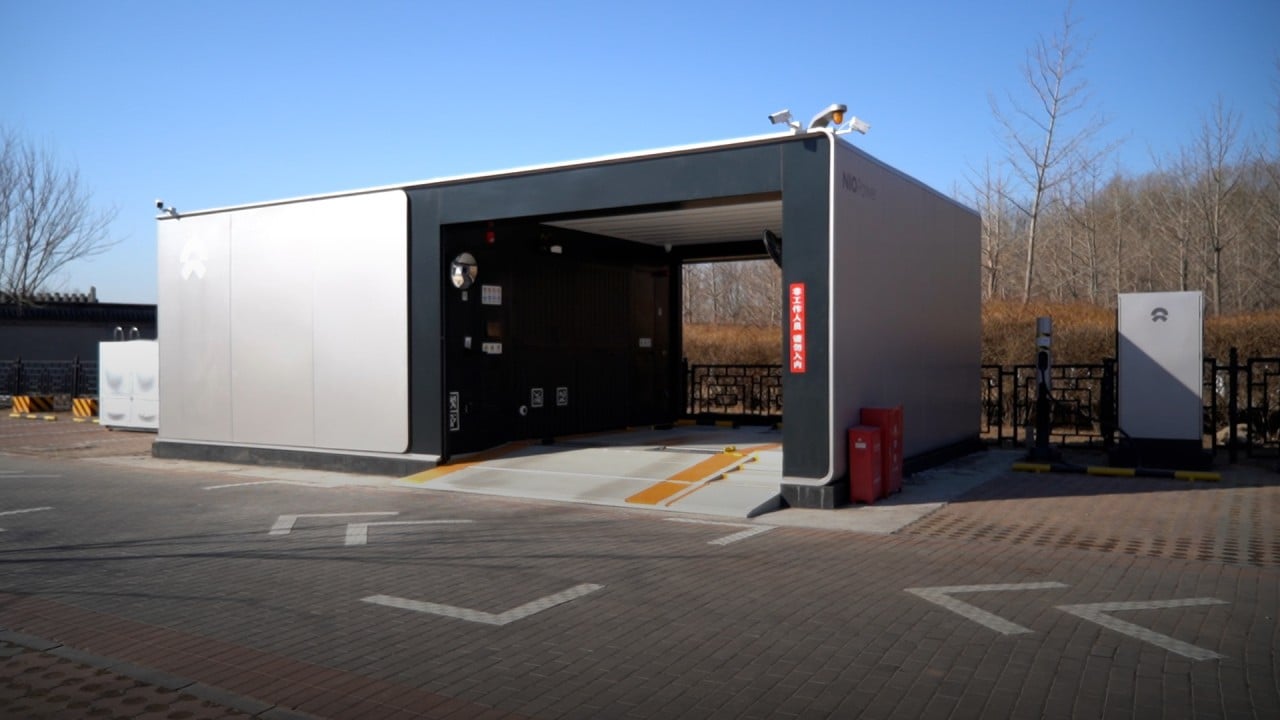
China’s new-energy vehicle sales drop in February for second month in a row, but outlook remains upbeat
- NEV sales reached 334,000 last month, down 22.6 per cent from January, according to the China Association of Automobile Manufacturers
- NEV sales were affected after subsidies were slashed by 30 per cent in January
China’s booming new-energy vehicle (NEV) segment hit a blip for a second consecutive month in February, as sales were affected by the Lunar New Year holiday and a cut in subsidies.
Sales of NEVs – pure electric, plug-in hybrids and fuel-cell vehicles – reached 334,000 last month, down 22.6 per cent from January, according to the China Association of Automobile Manufacturers (CAAM).
In January, sales fell 18.6 per cent from December, when it surged ahead of the 30 per cent subsidy cuts on NEV purchases that came into effect in the new year. However, sales jumped 184.3 per cent year on year.
“The weak February data does not truly reflect the market situation,” said Tian Maowei, a manager with Yiyou Auto Service in Shanghai. “Sales will rebound in March and the months to come because electric cars are increasingly well received by Chinese drivers.”

The Lunar New Year holiday, which fell between January 31 and February 6 this year, is normally a lean period for car sales, as people meet for family gatherings instead of making big-ticket purchases. Car showrooms are also closed during the holiday.
Overall industry sales, which includes internal combustion engine (ICE) cars, hit 1.73 million last month, 31.4 per cent lower than January, CAAM data showed.
China, the world’s largest automotive market, is witnessing soaring growth of NEVs buoyed by Beijing’s goal of achieving carbon neutrality by 2060. Young drivers who are switching to more environmentally-friendly battery-powered vehicles from ICE cars are also attracted by the intelligent features of the smart electric vehicles built by Tesla and its Chinese rivals.
Tesla dominated the mainland’s premium EV segment last year, selling 321,000 units, up 117 per cent from a year earlier. Xpeng, NIO and Li Auto, the three Chinese smart EV start-ups competing against Tesla, delivered a combined 280,075 units.
The trio also reported lacklustre deliveries last month because of the week-long holiday.
While Tesla does not report monthly data in China, the China Passenger Car Association (CPCA) will publish the February numbers later this month.
China’s move to cut subsidies on NEVs is not surprising as the Ministry of Finance had said in April 2020 that it would phase out subsidies by the end of 2022. The subsidies were introduced to encourage the uptake of NEVs.
Pure-electric cars with a driving range of more than 400km are eligible for a 12,600 yuan (US$1,998) subsidy, compared with 18,000 yuan previously.
But analysts said the eventual withdrawal of subsidies would not have a long-term impact on sales of electric cars.
Cui Dongshu, general secretary of the CPAC, predicted last month that sales of NEVs on the mainland would jump 84 per cent to 5.5 million units in 2022.
Meanwhile, Evergrande New Energy Vehicle, a car-making unit of embattled developer China Evergrande Group, has set up a 100 million yuan subsidiary to build charging piles and charging infrastructure, showing its commitment to EV development, according to business and trademark registration tracking firm Tianyancha.
But analysts said a shortage of batteries and chips could hold back the NEV sector’s galloping growth this year.
David Zhang, an automobile industry researcher with North China University of Technology, predicted that output of batteries and car chips may only be enough for 4.4 million NEVs this year.
That would leave a shortage of more than 1 million vehicles based on CPCA’s forecast.
“It depends on how fast the suppliers [of batteries and chips] expand their production to meet the rising demand,” Zhang said. “The supply chain bottleneck is likely to be eased in the second half of 2022.”
William Li, the co-founder and CEO of NIO, said late last year that the carmaker’s delivery volume in 2022 would largely hinge on how many batteries it could secure.


